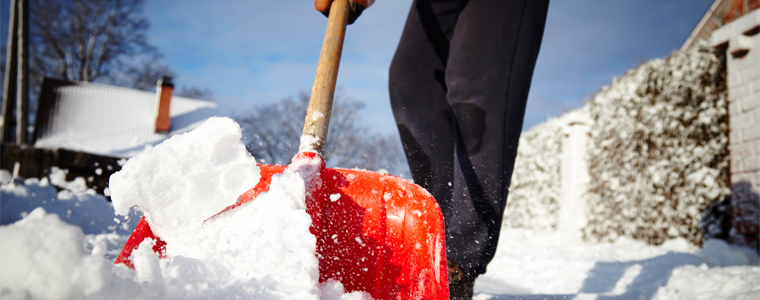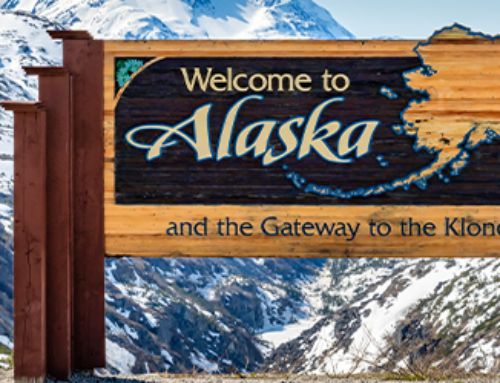Moving to Alaska is an adventure in and of itself, but there are certain things that need to be taken into consideration that you might not be used where you currently live. If you are from one of the warmer, temperate-weathered states, you may be in for a shock when it comes to preparing your home for the winter months. Alaskan winters are marked by heavy and unforgiving snow storms and freezing temperatures. Depending on where you live, you can experience long periods of storming that keep you from being able to go outside. You should ask your neighbors for advice, but here are some basics on what an Alaskan home needs to survive harsh months.
Structural
- Windows: The most important part of the house for controlling the temperature is your windows. Old homes probably have old windows that are leaking out heat and letting in cold air. Check all of your window panes and the integrity of the glass before the winter rolls in so you can fix them in advance. Fixing the windows once you are mid winter will be a disaster.
- Insulation: If you have lived anywhere cold before, you know how vital good insulation can be. If your home needs insulation, you will immediately know in Alaska by the fact that everyone always feels cold inside the house.
- Heating: Just having quality windows and insulation won’t heat your home up enough to survive the winter. You need a strong heater that warms the entire home, not just one room. Central heat is better and you should test it thoroughly before the winter arrives. A solid fireplace is also ideal. Just be sure you keep your chimney clean and lots of extra wood stacked in a dry area. Using the fireplace will save you in heating costs as well.
- Backup Electricity: In case of an electricity outage, you should be prepared to continue heating your home, food, and bodies with the use of backup electricity. A small gas-operated generator should be sufficient to keep you secure until the power comes back.
- Weather Stripping: Similar in importance to the windows is the entire building’s weather stripping. Doors, windows, garage, and anywhere else where cold air can leak through must be repaired annually to keep the warmth in and cold out. Don’t assume the weather stripping is still good because it was replaced last year. Double and triple check before you get stuck shivering every night.
- Plumbing: Often overlooked before the winter kicks in are the pipes under the ground. You obviously don’t want to be crawling under the house to fix the plumbing in extreme cold, so go have a look right now and make sure there are no leaks and everything looks in top shape. Old plumbing can ruin your winter and leave you melting snow for drinking water. Have a professional take a look to determine the estimated life span your pipes still have in them. Old pipes run the risk of breaking – and that’s a headache you just don’t need during a snow storm.
Tools
- Snow shovel: Getting out of your front door and the driveway is a pain during winter, but impossible without some way to shovel the snow out of the way. You might also need to shovel snow off the roof to avoid structural damage and leaks.
- Salt: The easiest way to melt ice is to have tons of salt on hand and layer it where you need to walk and drive. Stock up way in advance to be prepared.
- Ice Scraper: Windows, specifically on your car, will freeze and have a thick layer of ice that needs to be scraped. Invest in a good ice scraper to help you stay safe on the road. Never pour water on frozen-over windows – they could crack.
- Knife, Lighter, Duct Tape, Utility Tool, and String: Five essential small items that can get you through an emergency. All survivors carry these items because they have multiple uses and can get you out of sticky situations.
- Charged Cell Phone: Have a good quality cell phone with a way to manually recharge it (without electricity) in case of emergency.
Supplies
- Food: Stocking up on food is a no-brainer but people often procrastinate until the last minute or until it is too late. Go out and buy enough supplies of perishable and non-perishable food like MREs and power bars to last you through the most difficult winter storm you can imagine.
- Water: Water is the key to survival, even in the cold. Keep a fresh supply of drinking water on hand (not dependant on your plumbing system) and also have a water filtration device and a way to melt snow into drinking water.
- Coffee/Tea: While it may seem unnecessary, having enough coffee and tea to last you through the cold winter storms will help you keep warm and sane.
Any Alaskan knows that you really can’t stress enough the importance of being prepared. If you tend to procrastinate, now is the best time to nip that habit in the bud!
Tell us about your move!
 (907) 868-4756
(907) 868-4756


